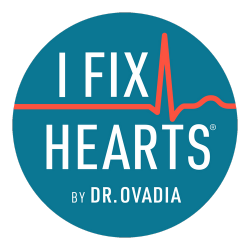You’re already well-aware of heart disease and the disastrous effects it can have on your health. But, if the rampant prevalence of it is anything to go by, you may not know where to begin with disease prevention or how to measure your heart health in the first place.
Please don’t feel singled out: 68% of Americans are worried about dying from heart disease, but less than half of them know how to identify it early or control its contributing factors. Still fewer Americans, about 200,000, have used a test to measure their heart health.
The good news is that measuring heart health is neither confusing nor complex. In fact, it’s recommended to get your heart tested at least once every two years. You just need to know the testing options currently available to you — and whether you’re currently at risk for disease.
Are you at risk for heart disease?
It’s true that some risk factors for heart disease are unalterable. You can’t change your genetic predisposition for disease and you can’t overlook a family history of heart attack or stroke. However, the vast majority of our heart disease factors are controllable — including weight, cholesterol, blood pressure, and glucose levels.
You may be at risk for heart disease if:
- Cardiac problems and heart disease run in your family
- You smoke, have a poor diet, or exercise infrequently
- You have comorbidities such as hypertension or diabetes
Even if you don’t think these factors apply to your lifestyle, you should still be checking your heart for the signs and symptoms of disease. Research shows us that half of all Americans have at least one factor for heart disease — some of which could be mitigated or controlled if caught in advance.
5 options for testing your heart health
There are several different ways you could quantify your heart health. You could take some measurements of your metabolic health at home (i.e., blood sugar, waist circumference, etc.), but it’s always a good idea to run clinical tests that get a second or third pair of eyes on your metrics.
I suggest looking into these five options:
1. Stress tests
As the name implies, stress testing requires you to put some strain on the heart by exercising or taking medication. Doctors watch for any symptoms of fatigue or inject you with special dyes that track the flow of blood around your body.
Stress tests can diagnose the symptoms of heart disease, but they aren’t preventative — they only show if you’re currently experiencing heart disease, and not whether you’re potentially at risk. If you want a diagnostic that will catch problems in advance, you’re better off taking another assessment.
2. Echocardiograms
Echocardiograms are similar to sonograms for pregnant women — they use special gels and sensors to image your heart on a screen. Doctors will check the actual structure of your heart for any problems and monitor the flow of blood around your valves and arteries.
There are two types of echocardiograms: transthoracic and transesophageal. Transthoracic tests image your heart from outside your body, while transesophageal tests put scopes in your esophagus to produce clearer images.
3. Blood pressure
This is by far the easiest and most straightforward way to test your heart health. Most major grocery stores and pharmacies have a machine available, or you could purchase a sphygmomanometer (blood pressure monitor) for home use.
The average adult should have a blood pressure reading of 120/80 mmHg. Anything higher is indicative of hypertension and suggests possible damage to the heart.
4. Coronary artery calcium scans
I’ve found that coronary artery calcium scans are some of the best screening tools on the market. CACs are noninvasive tests that check your heart for plaque buildup, with a score of 0 to 400+ that indicates the severity of your calcium deposits.
Calcium scans aren’t perfect, however. You can’t use these tests to detect blockages like soft plaque atherosclerosis, which means CAC scans are best used in combination with other tests.
5. A full-panel blood test
Full panels are designed to check your blood for the tell-tale signs of heart disease. Every panel will look different depending on the situation, but it’s a good idea to use six basic tests to monitor your metabolic health:
- Complete Blood Count (CBC)
- Comprehensive Metabolic Panel (CMP)
- Basic Lipid Profile
- Insulin Level
- Vitamin D Level
- Hemoglobin A1C
Keep in mind that lab tests aren’t always 100% comprehensive — they simply provide a snapshot of your heart health at a moment in time. That being said, they’re still an excellent way to get a baseline reading of your health and track changes over time.
Interpreting your lab results
Testing is a great way to protect your heart from the silent killer of disease. However, it’s still just the first step in the risk assessment process. Now that you have raw numbers and percentages in front of you, it’s time to determine where you actually fall on the scale in terms of risk.
You can always visit with your PCP to discuss the results of your test, or chat with a metabolic health coach about what your numbers mean. However, it’s entirely possible to interpret your lab work on your own.
I’m offering a 16-video course that walks through the ins and outs of lab work, including how you can build lab testing into your regular routine. You’re welcome to sign up at any time and complete it at your own pace.
